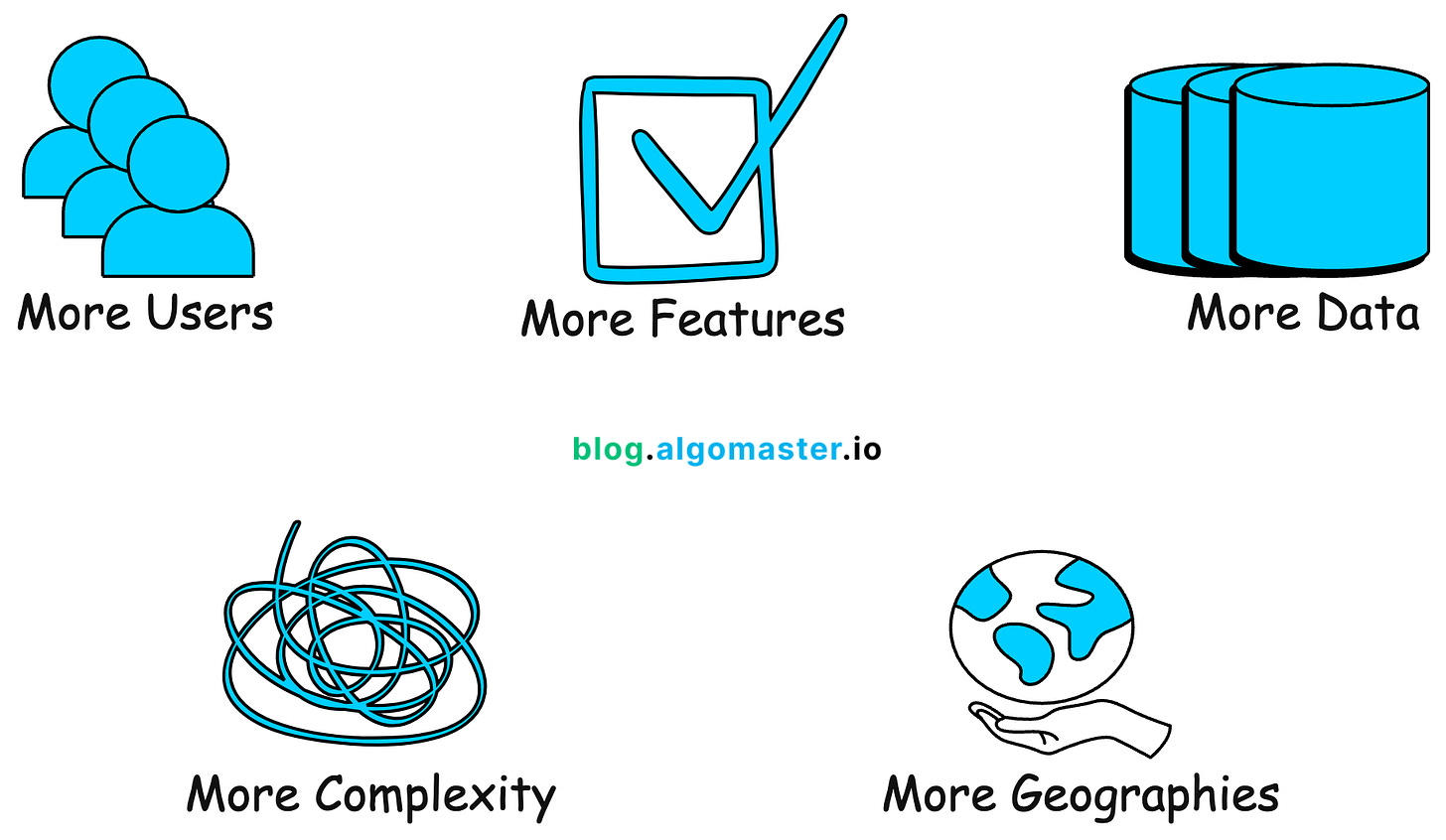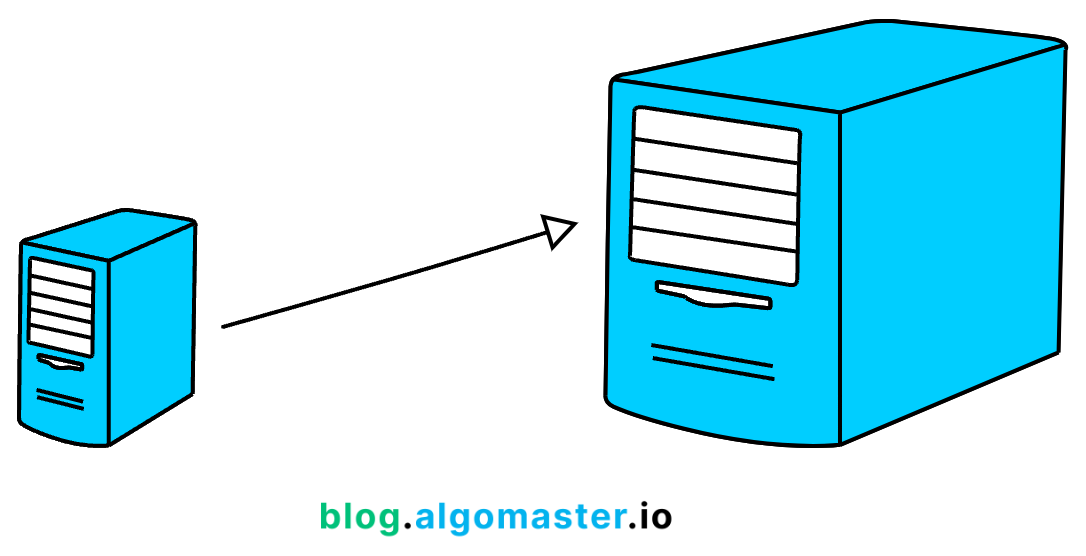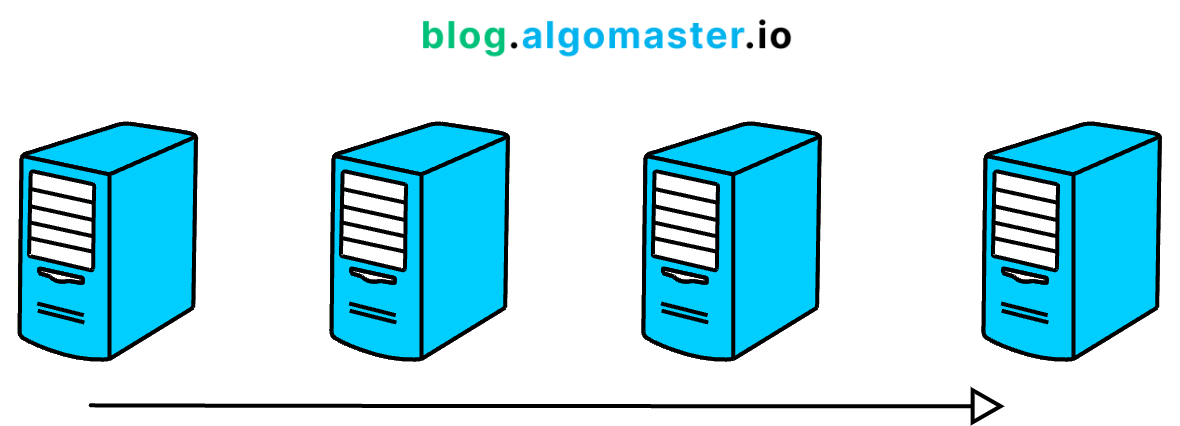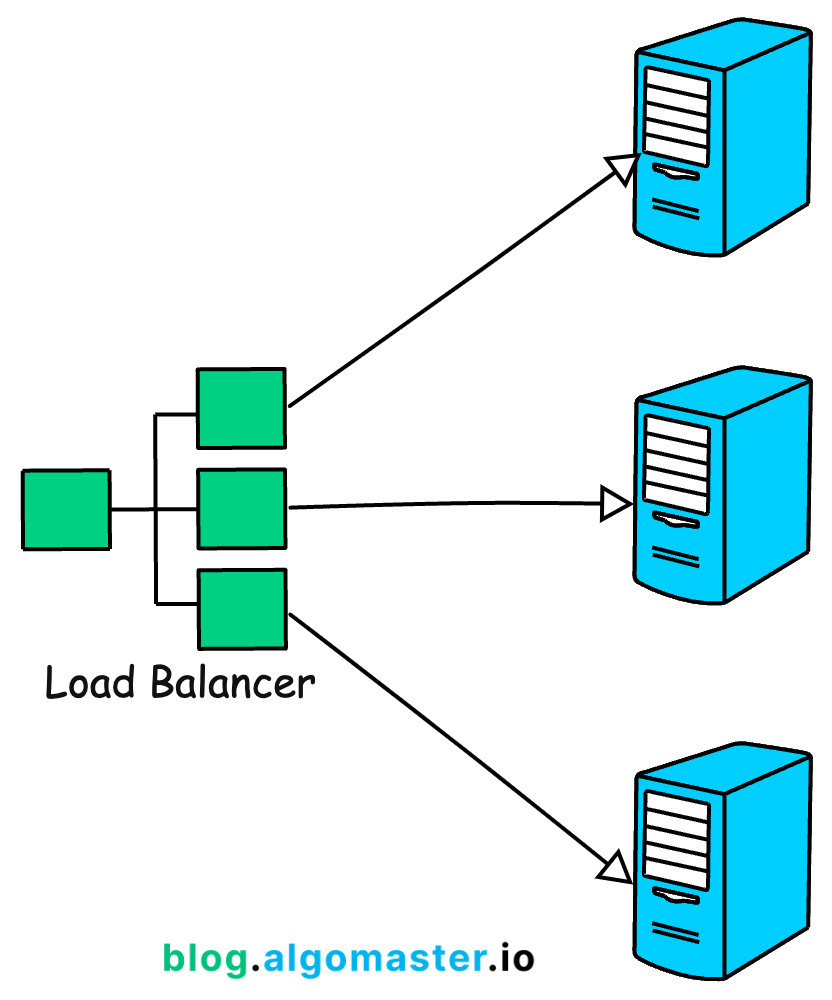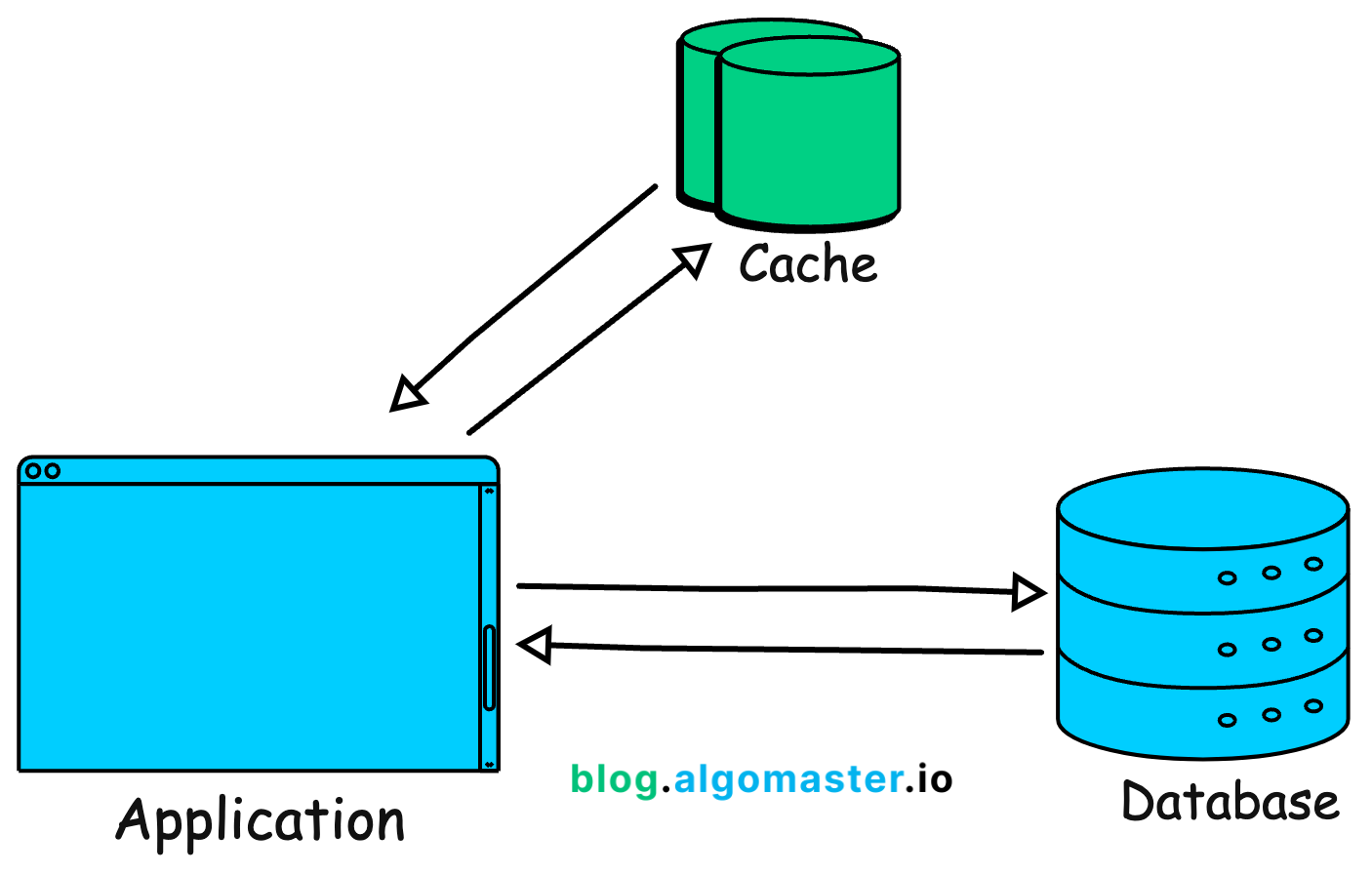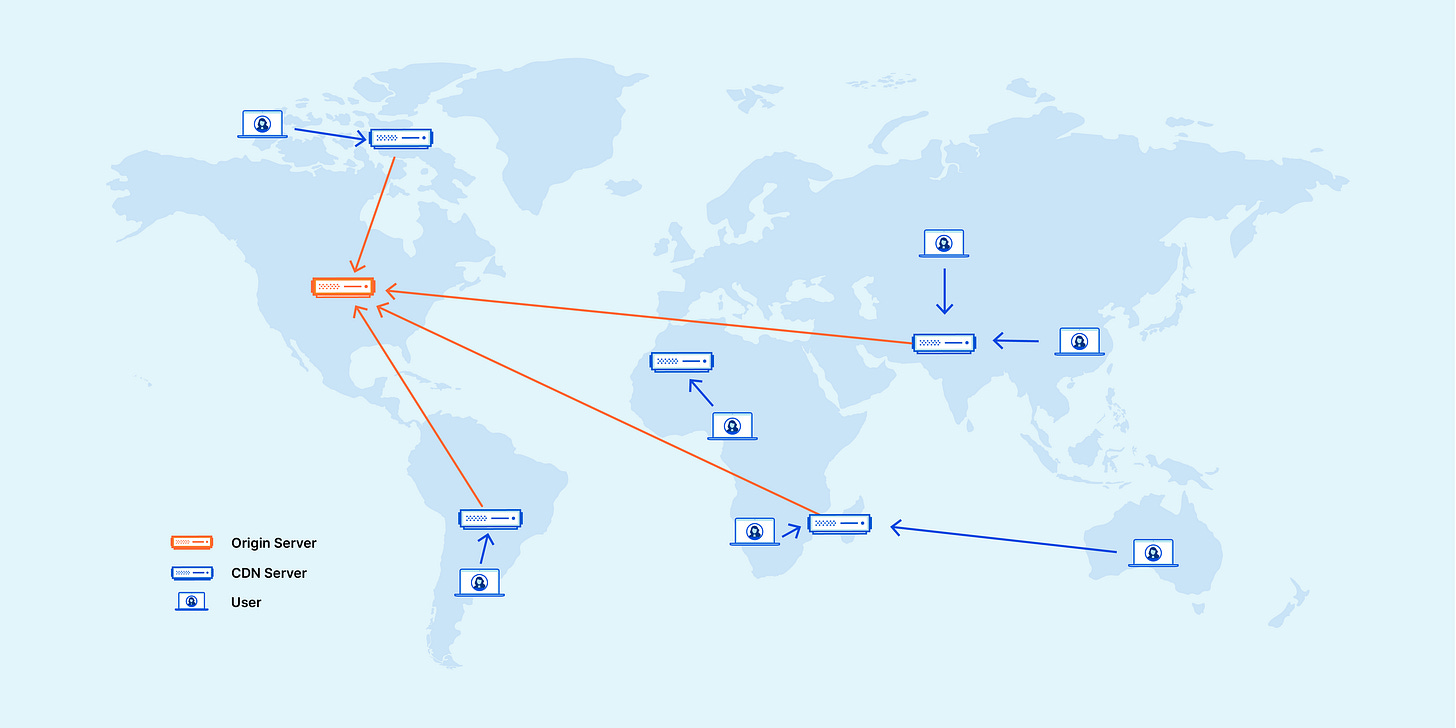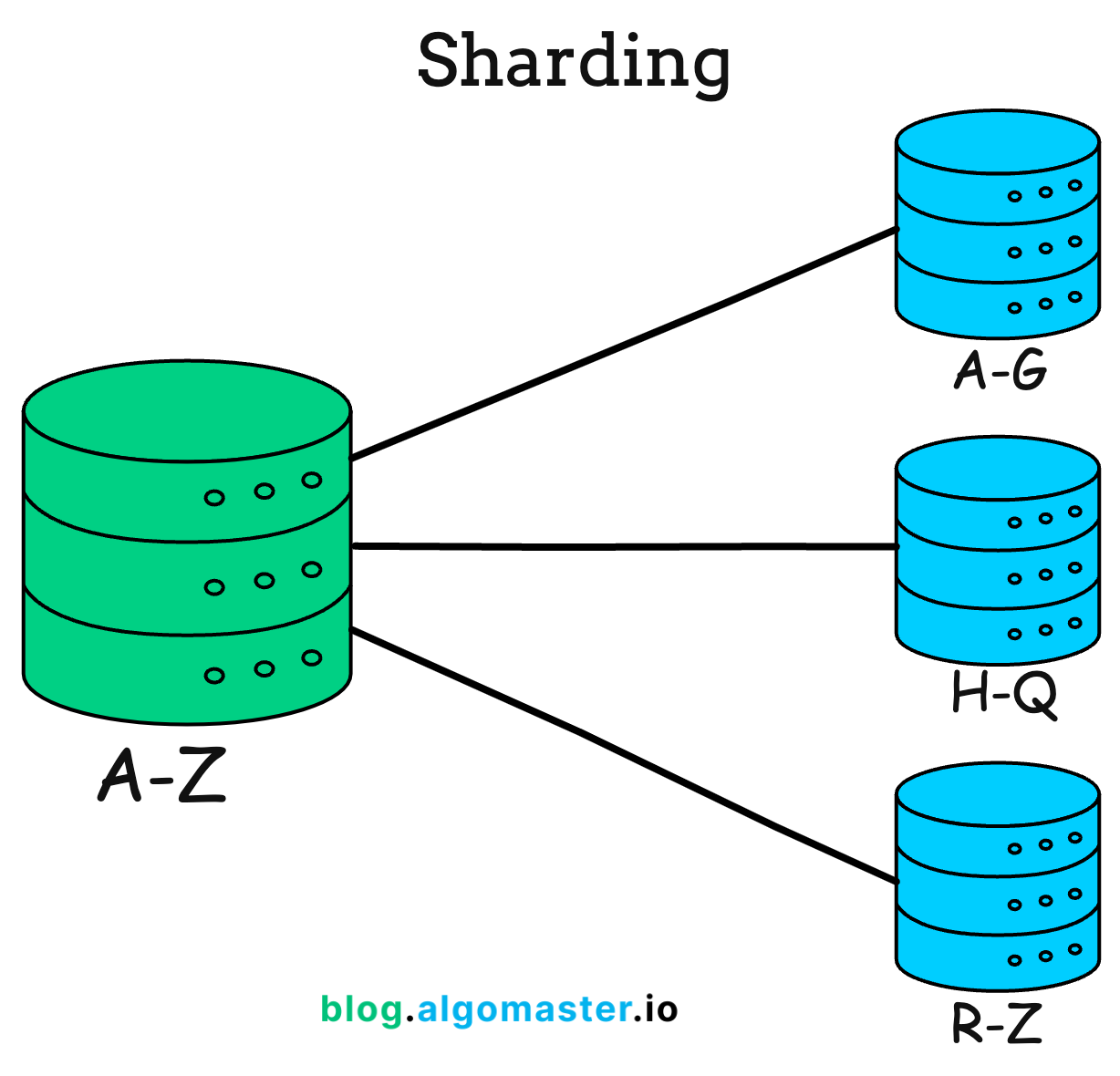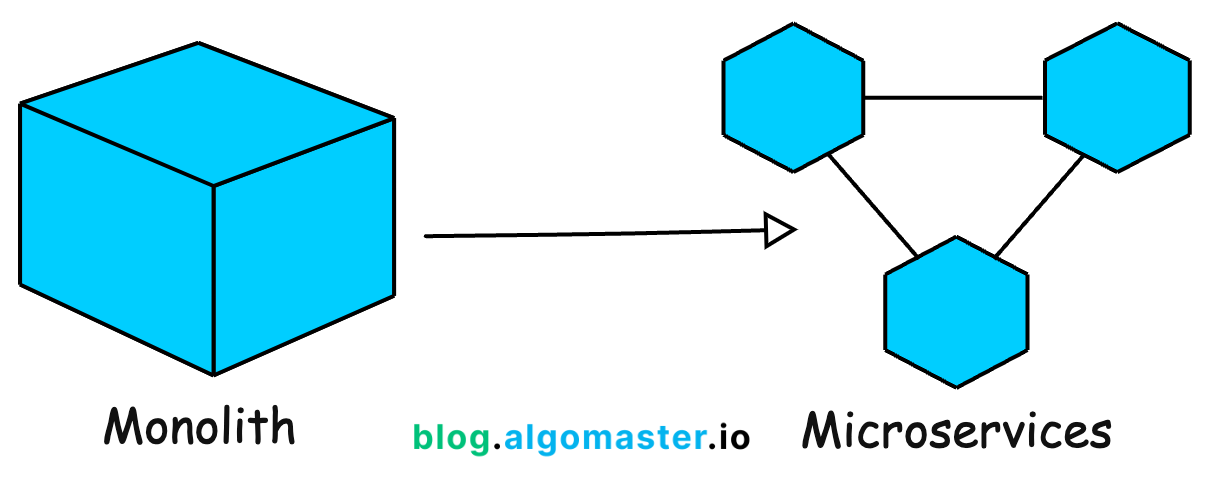System Design: What is Scalability?
#1 System Design – Scalability
As a system grows, the performance starts to degrade unless we adapt it to deal with that growth.
Scalability is the property of a system to handle a growing amount of load by adding resources to the system.
A system that can continuously evolve to support a growing amount of work is scalable.
In this article, we will explore different ways a system can grow and common ways to make a system scalable.
If you’re finding this newsletter valuable and want to deepen your learning, consider becoming a paid subscriber.
As a paid subscriber, you’ll receive an exclusive deep-dive article every week, access to a structured System Design Resource (100+ topics and interview questions), and other premium perks.
How can a System Grow?
A system can grow in several dimensions.
1. Growth in User Base
More users started using the system, leading to increased number of requests.
-
Example: A social media platform experiencing a surge in new users.
2. Growth in Features
More features were introduced to expand the system’s capabilities.
-
Example: An e-commerce website adding support for a new payment method.
3. Growth in Data Volume
Growth in the amount of data the system stores and manages due to user activity or logging.
-
Example: A video streaming platform like youtube storing more video content over time.
4. Growth in Complexity
The system’s architecture evolves to accommodate new features, scale, or integrations, resulting in additional components and dependencies.
-
Example: A system that started as a simple application is broken into smaller, independent systems.
5. Growth in Geographic Reach
The system is expanded to serve users in new regions or countries.
-
Example: An e-commerce company launching websites and distribution in new international markets.
How to Scale a System?
Here are 10 common ways to make a system scalable:
1. Vertical Scaling (Scale up)
This means adding more power to your existing machines by upgrading server with more RAM, faster CPUs, or additional storage.
It’s a good approach for simpler architectures but has limitations in how far you can go.
2. Horizontal Scaling (Scale out)
This means adding more machines to your system to spread the workload across multiple servers.
It’s often considered the most effective way to scale for large systems.
Example: Netflix uses horizontal scaling for its streaming service, adding more servers to their clusters to handle the growing number of users and data traffic.
3. Load Balancing
Load balancing is the process of distributing traffic across multiple servers to ensure no single server becomes overwhelmed.
Example: Google employs load balancing extensively across its global infrastructure to distribute search queries and traffic evenly across its massive server farms.
4. Caching
Caching is a technique to store frequently accessed data in-memory (like RAM) to reduce the load on the server or database.
Implementing caching can dramatically improve response times.
Example: Reddit uses caching to store frequently accessed content like hot posts and comments so that they can be served quickly without querying the database each time.
5. Content Delivery Networks (CDNs)
CDN distributes static assets (images, videos, etc.) closer to users. This can reduce latency and result in faster load times.
Example: Cloudflare provides CDN services, speeding up website access for users worldwide by caching content in servers located close to users.
6. Sharding/Partitioning
Partitioning means splitting data or functionality across multiple nodes/servers to distribute workload and avoid bottlenecks.
Example: Amazon DynamoDB uses partitioning to distribute data and traffic for its NoSQL database service across many servers, ensuring fast performance and scalability.
7. Asynchronous communication
Asynchronous communication means deferring long-running or non-critical tasks to background queues or message brokers.
This ensures your main application remains responsive to users.
Example: Slack uses asynchronous communication for messaging. When a message is sent, the sender’s interface doesn’t freeze; it continues to be responsive while the message is processed and delivered in the background.
8. Microservices Architecture
Micro-services architecture breaks down application into smaller, independent services that can be scaled independently.
This improves resilience and allows teams to work on specific components in parallel.
Example: Uber has evolved its architecture into microservices to handle different functions like billing, notifications, and ride matching independently, allowing for efficient scaling and rapid development.
9. Auto-Scaling
Auto-Scaling means automatically adjusting the number of active servers based on the current load.
This ensures that the system can handle spikes in traffic without manual intervention.
Example: AWS Auto Scaling monitors applications and automatically adjusts capacity to maintain steady, predictable performance at the lowest possible cost.
10. Multi-region Deployment
Deploy the application in multiple data centers or cloud regions to reduce latency and improve redundancy.
Example: Spotify uses multi-region deployments to ensure their music streaming service remains highly available and responsive to users all over the world, regardless of where they are located.
Thank you for reading!
If you found it valuable, hit a like ❤️ and consider subscribing for more such content every week.
If you have any questions or suggestions, leave a comment.
P.S. If you’re finding this newsletter helpful and want to get even more value, consider becoming a paid subscriber.
As a paid subscriber, you’ll receive an exclusive deep dive every week, access to a comprehensive system design learning resource , and other premium perks.
There are group discounts, gift options, and referral bonuses available.
Checkout my Youtube channel for more in-depth content.
Follow me on LinkedIn, X and Medium to stay updated.
Checkout my GitHub repositories for free interview preparation resources.
I hope you have a lovely day!
See you soon,
Ashish


